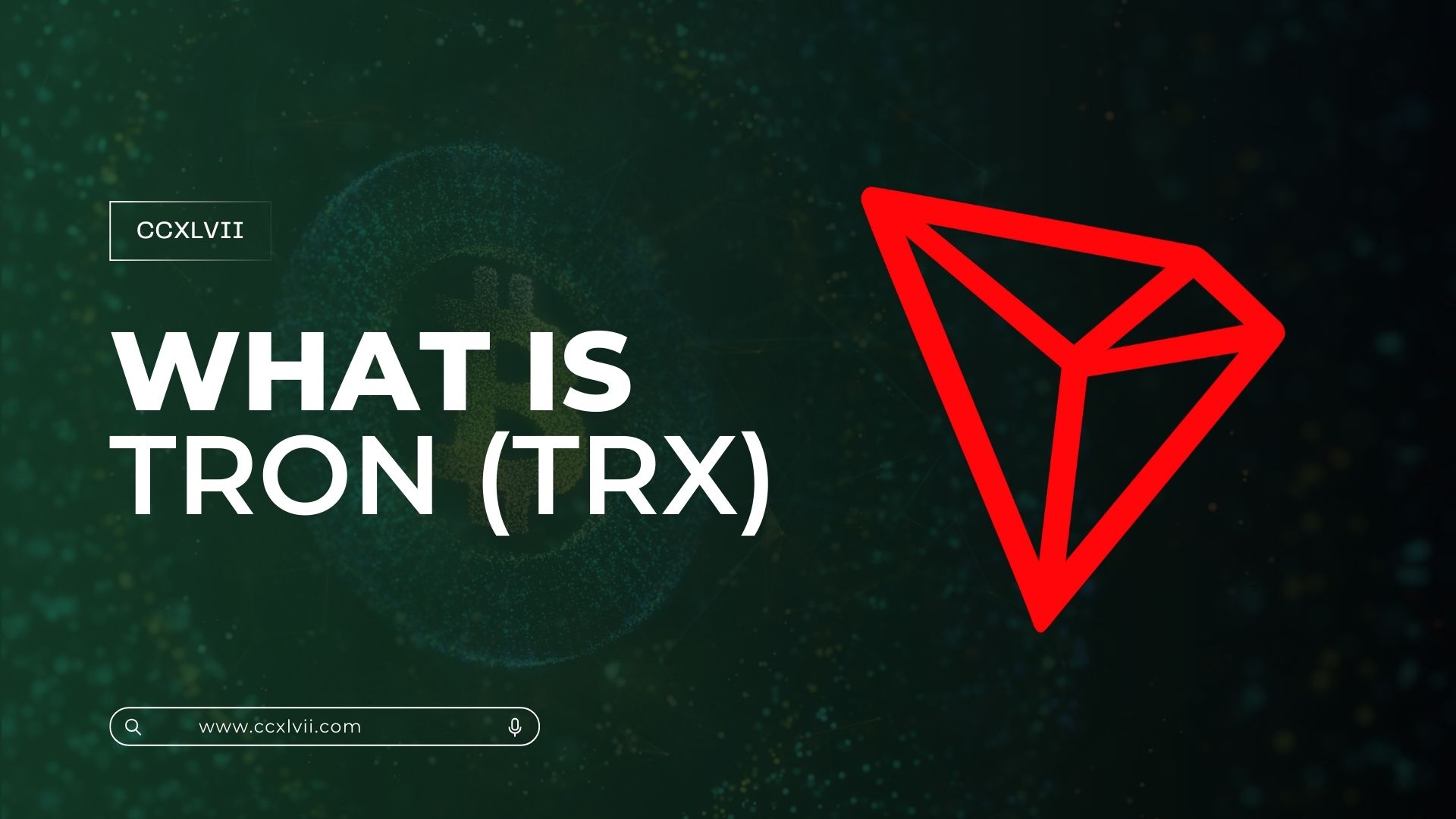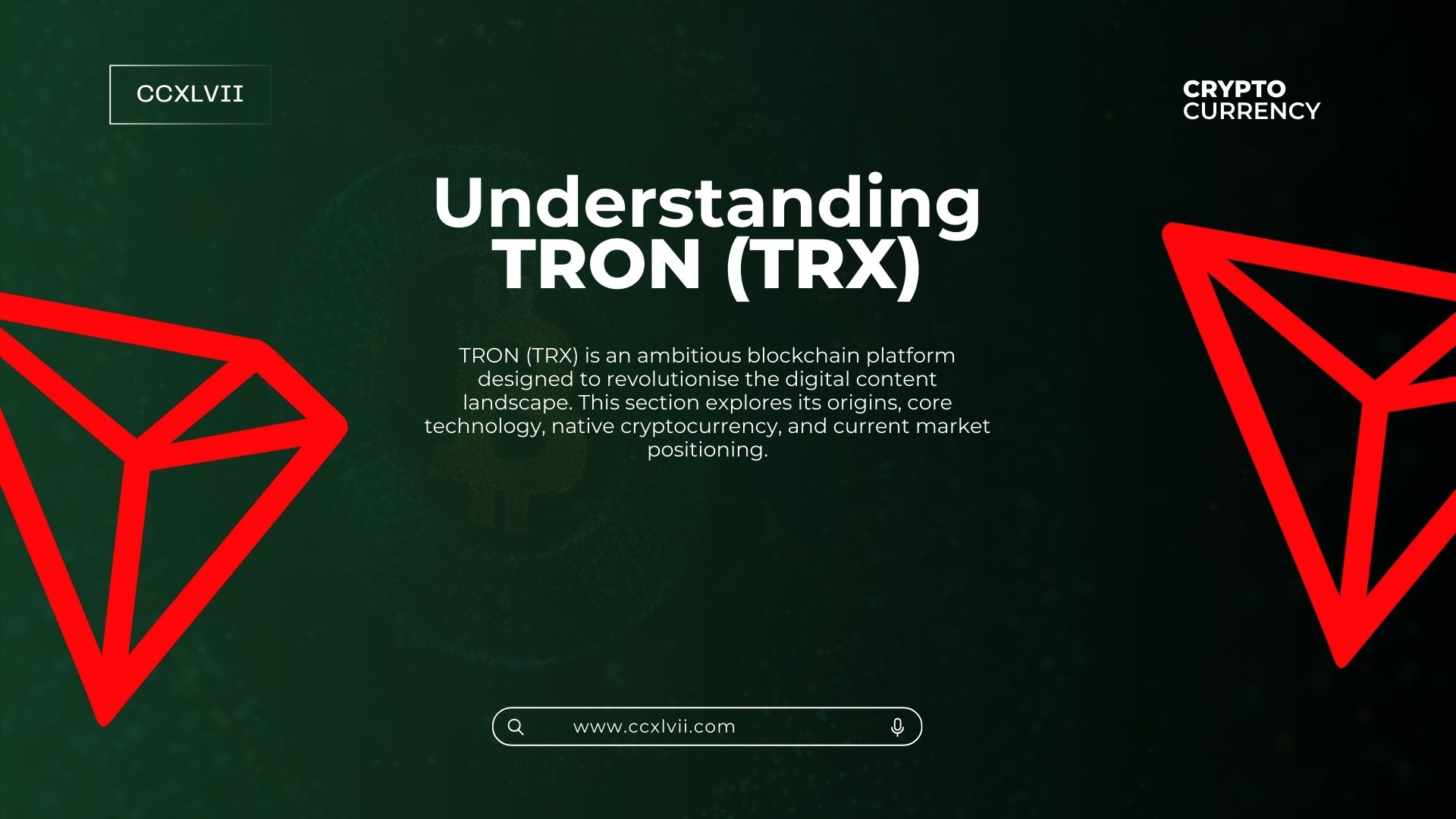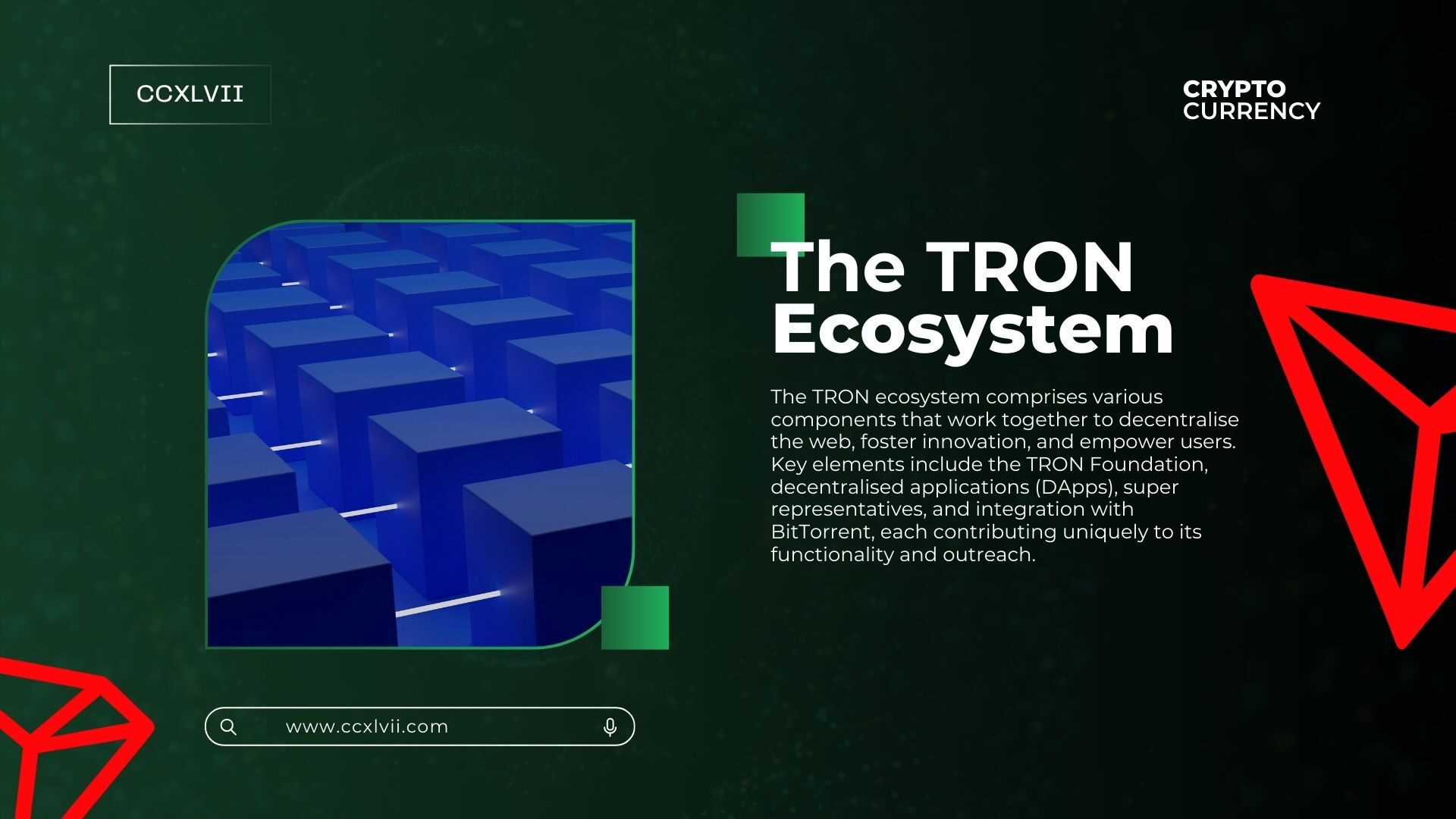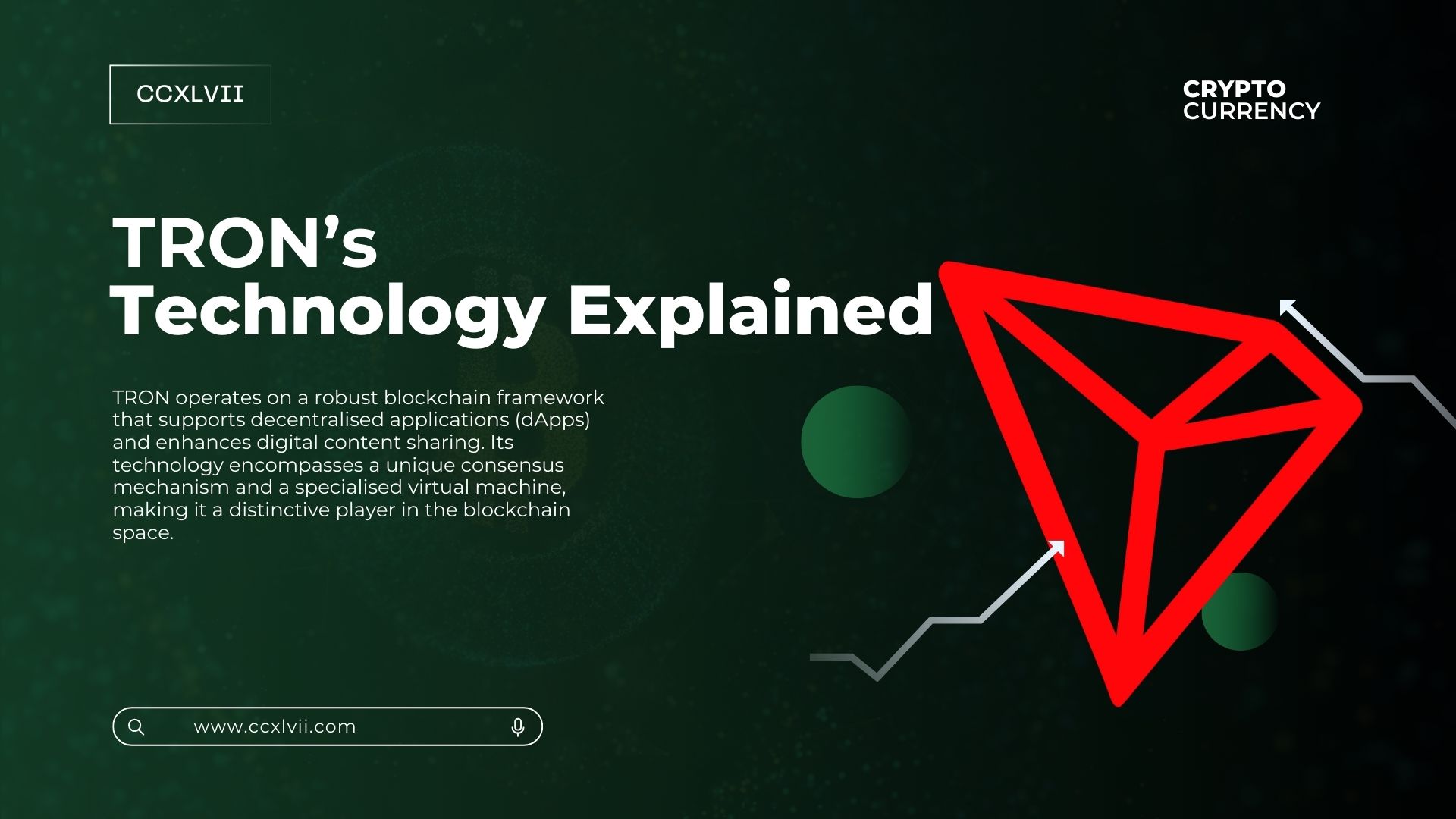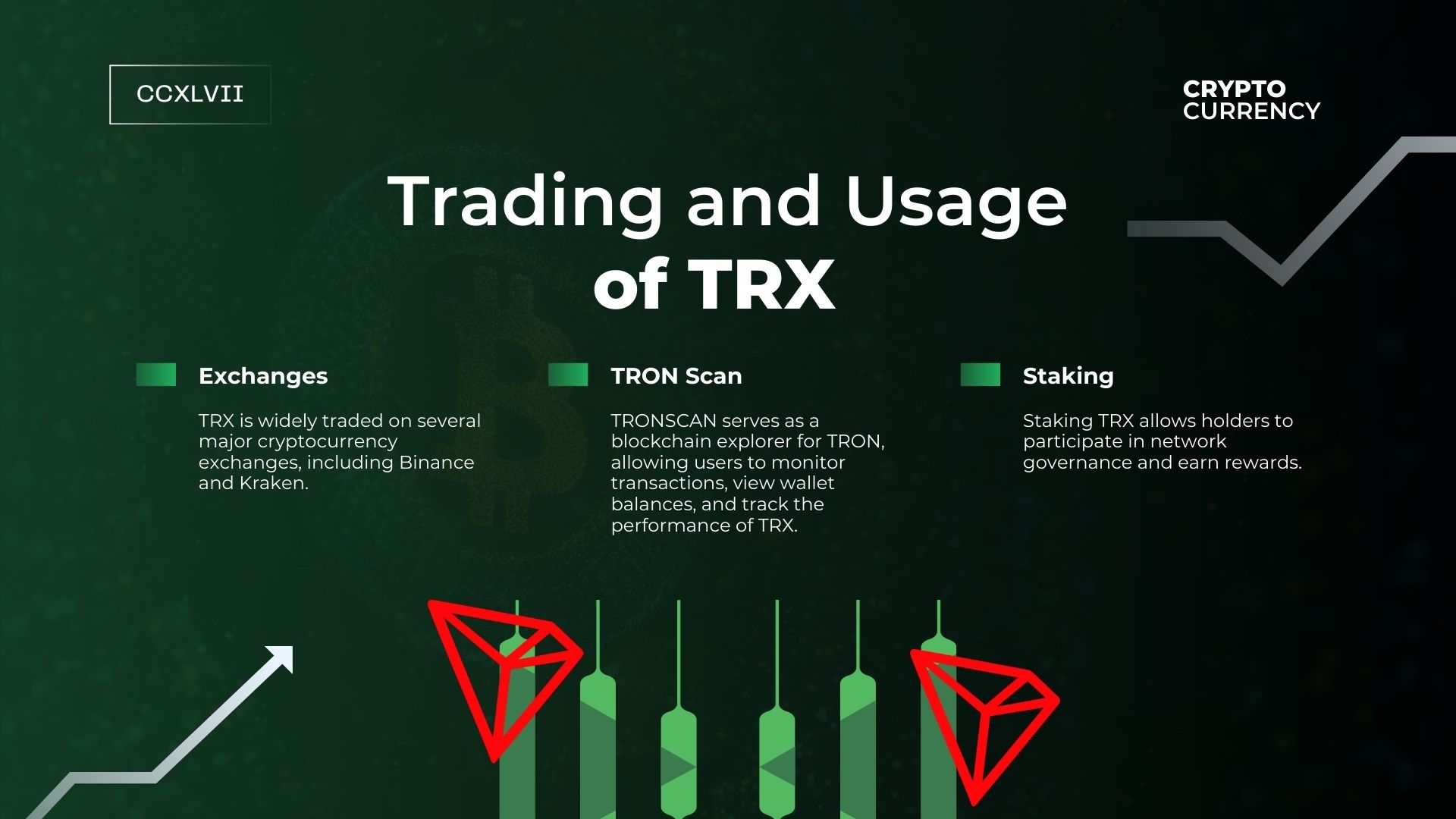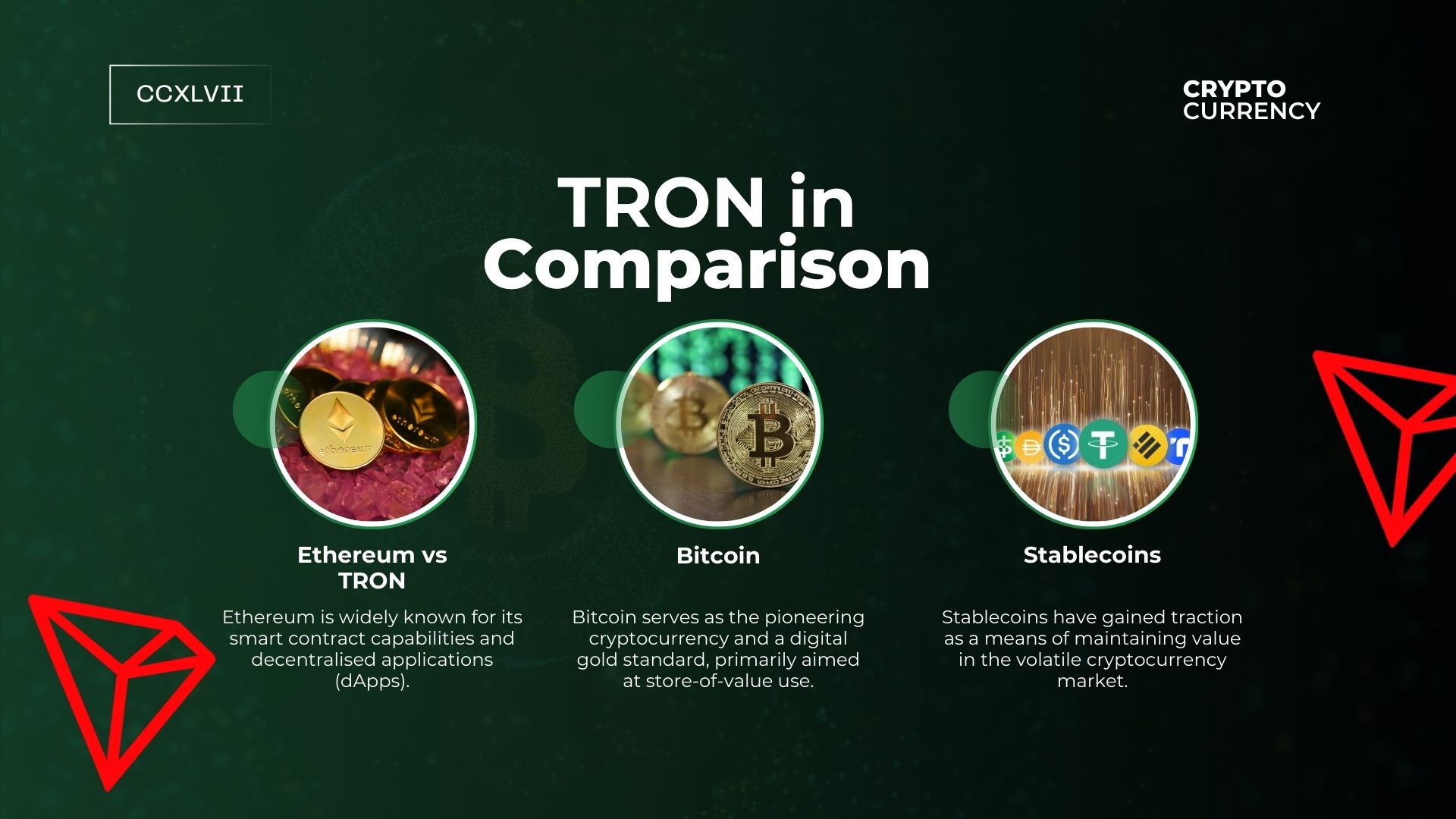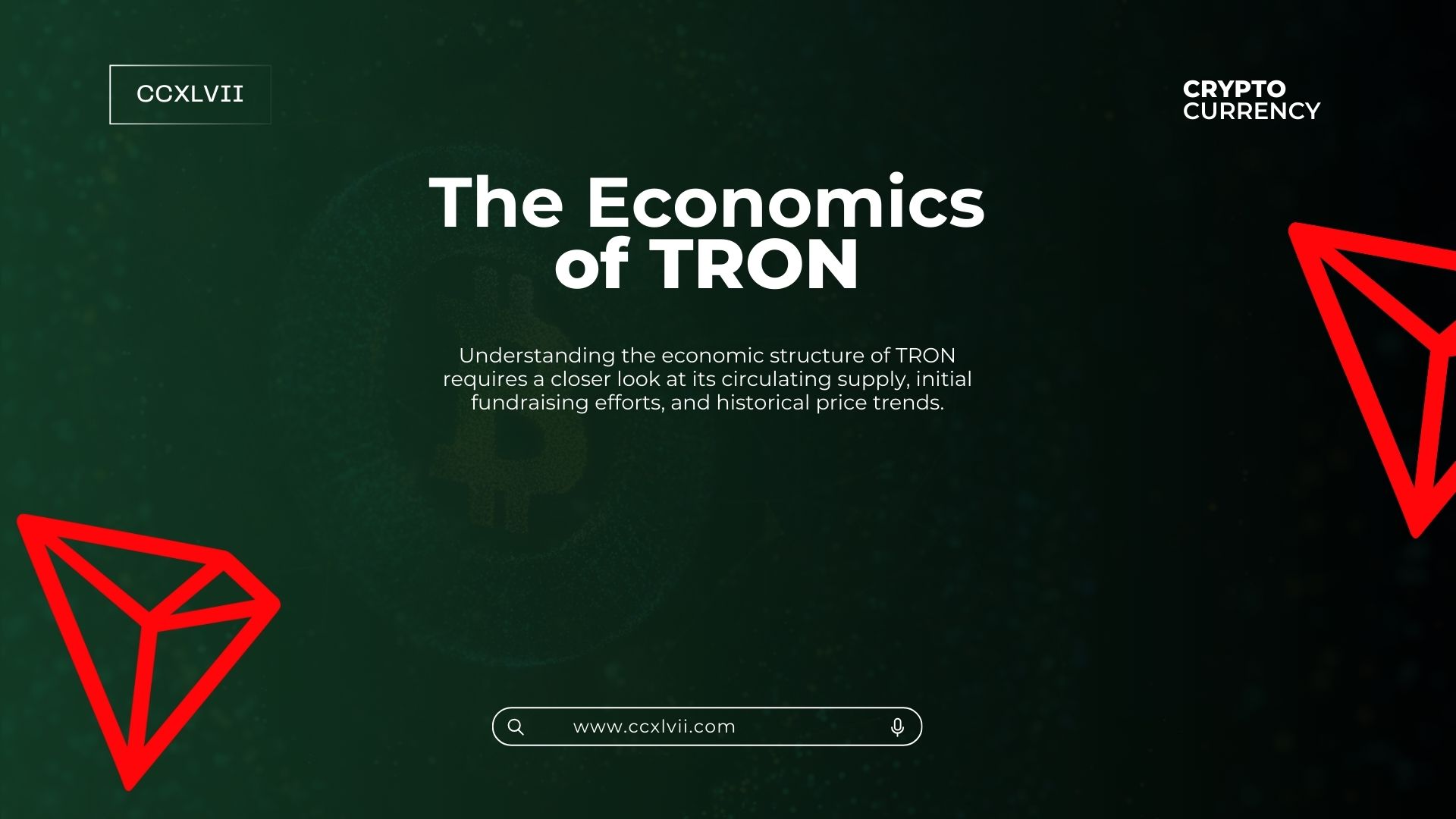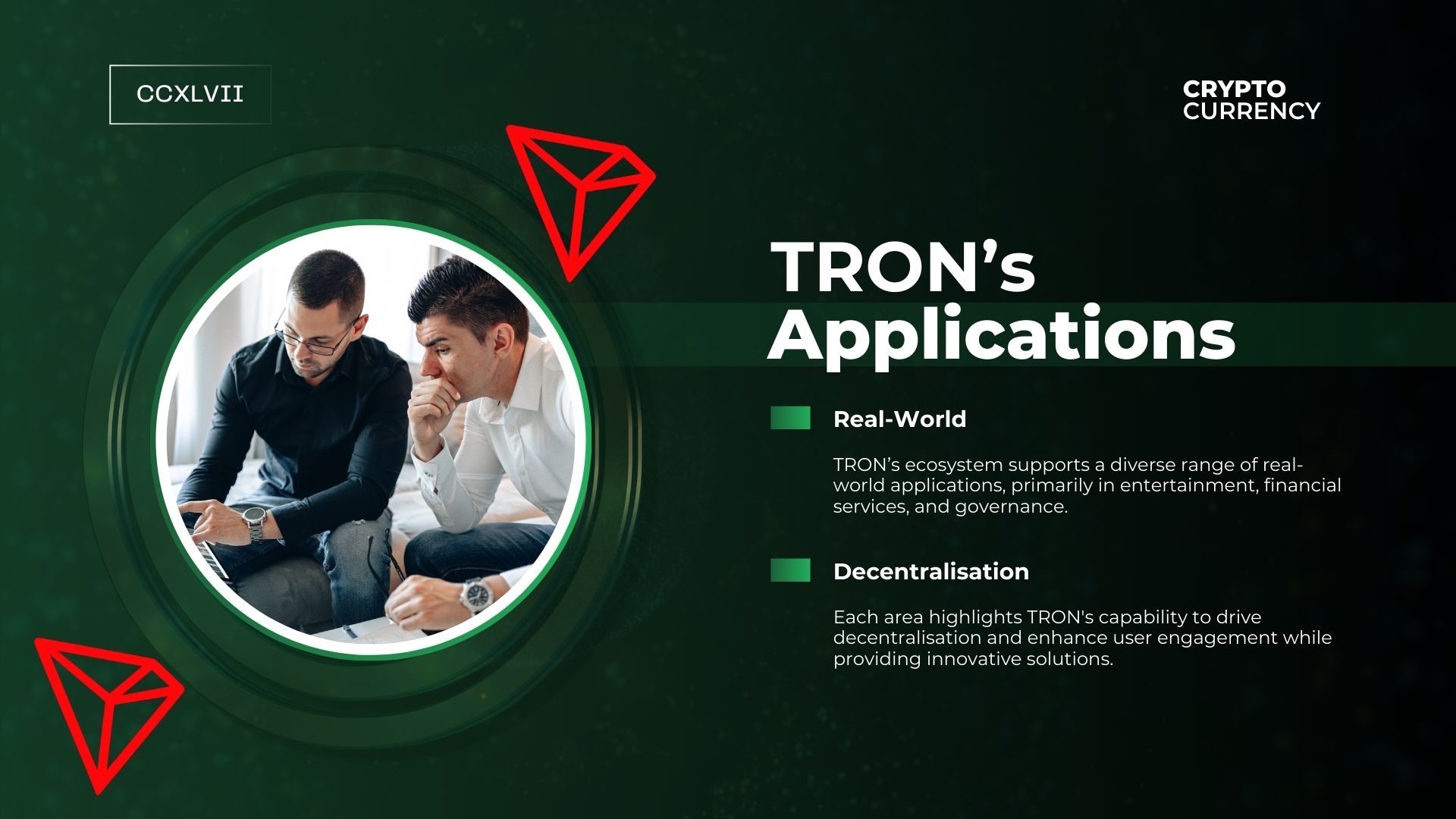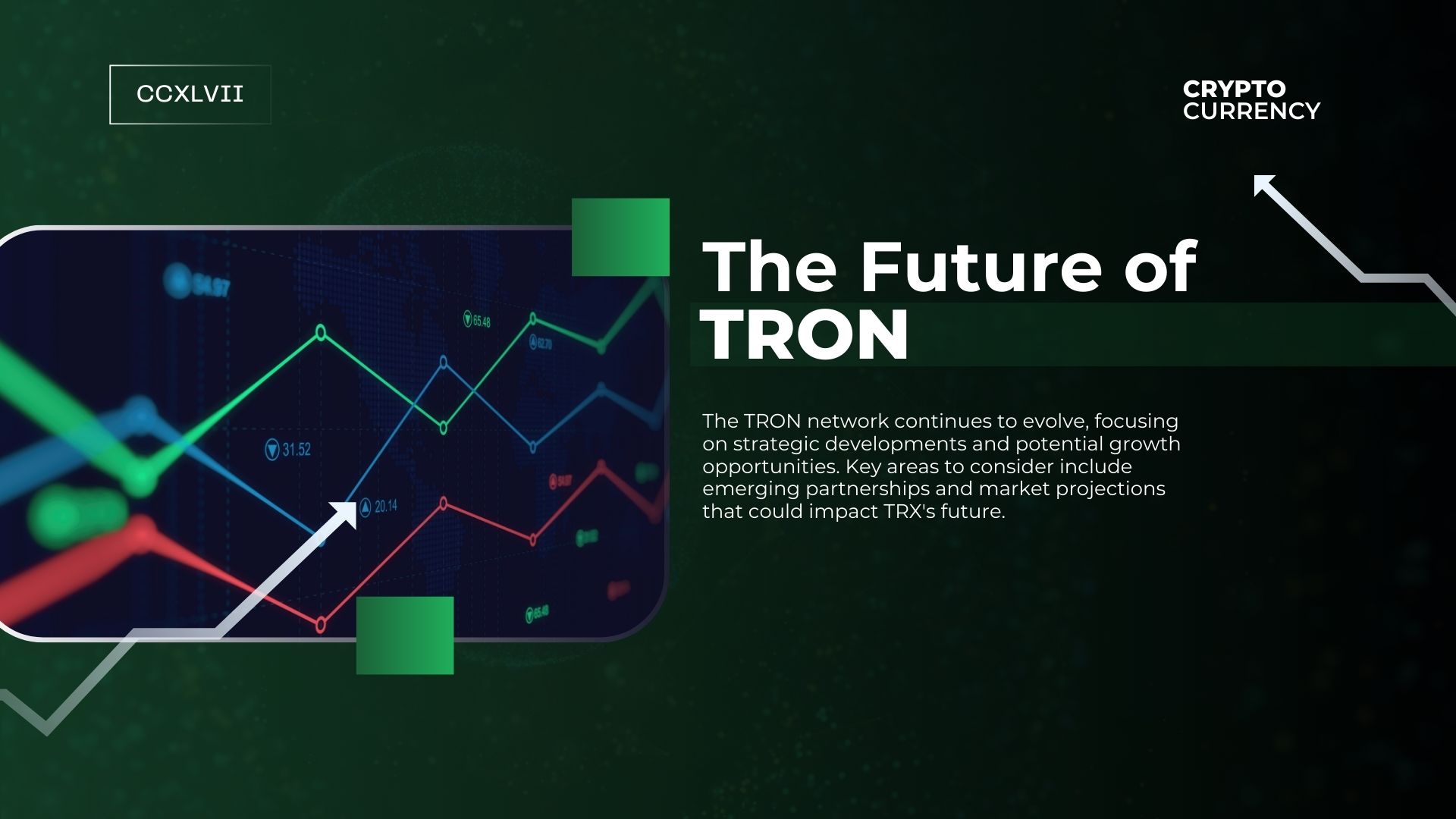TRON (TRX) is a blockchain-based platform aimed at decentralising the web by enabling developers to create decentralised applications (DApps).
The TRON network facilitates the exchange of digital assets without intermediaries, empowering content creators to maintain control over their work.
By utilising TRX tokens, users can engage in transactions and build new experiences within a vibrant ecosystem.
Launched in 2017, TRON has evolved significantly from its origins as an ERC-20 token on the Ethereum blockchain. It now operates on its own network, providing faster transactions and lower fees.
This transformation has made TRON an attractive option for developers and entrepreneurs looking to innovate in the decentralised space.
With a focus on fostering a user-centric digital environment, TRON aims to redefine how content is shared and consumed online.
As it continues to grow, understanding TRON and its functionalities becomes essential for those interested in the future of blockchain technology and decentralisation.
Understanding TRON (TRX)
TRON (TRX) is an ambitious blockchain platform designed to revolutionise the digital content landscape. This section explores its origins, core technology, native cryptocurrency, and current market positioning.
The Birth of TRON and Justin Sun
TRON was established in September 2017 by Justin Sun, a prominent entrepreneur in the blockchain space. His vision was to create a decentralised internet, allowing creators to share content without intermediary interference.
Initially launched as an Ethereum token, TRON transitioned to its own blockchain in June 2018, marking a significant milestone. The TRON Foundation aimed to empower users by providing a platform that promotes content sharing and rewards creators through the use of cryptocurrency.
The TRON Blockchain and TRON Protocol
The TRON blockchain operates on a decentralised network that utilises a Delegated Proof of Stake (DPoS) consensus mechanism. This approach enhances scalability and efficiency, allowing for thousands of transactions per second.
The TRON Protocol supports smart contracts, enabling developers to build decentralised applications (dApps) easily.
Its architecture draws inspiration from established blockchain technologies, aiming to improve upon existing limitations related to speed and cost.
TRX: The Native Cryptocurrency
TRX is the native cryptocurrency of the TRON ecosystem. It serves multiple purposes, including transaction fees, rewards for content creators, and as a medium of exchange within the platform.
The tokenomics of TRX is structured to encourage participation. As of late 2023, this cryptocurrency has a substantial market cap, reflecting a robust community of investors and developers.
TRON’s Position in the Market
With a market capitalisation in the tens of billions, TRON is regarded as one of the leading blockchain platforms. It ranks favourably among its peers, reflecting the growing adoption of its technology.
The platform’s focus on decentralised content sharing has attracted numerous dApps, contributing to its vibrant ecosystem.
TRON continues to hold a prominent position in discussions surrounding blockchain innovation and cryptocurrency development.
The TRON Ecosystem
The TRON ecosystem comprises various components that work together to decentralise the web, foster innovation, and empower users. Key elements include the TRON Foundation, decentralised applications (DApps), super representatives, and integration with BitTorrent, each contributing uniquely to its functionality and outreach.
Main Components and TRON Foundation
At the heart of the TRON ecosystem lies the TRON Foundation, which plays a pivotal role in supporting development and growth. Founded by Justin Sun, the foundation focuses on creating a decentralised internet and promoting blockchain technology.
Key components of the TRON ecosystem include the TRON Virtual Machine (TVM), which allows developers to build DApps using various programming languages like Solidity.
The TRON protocol utilises a delegated proof-of-stake mechanism, enhancing transaction speeds and network efficiency.
Furthermore, the TRON Foundation provides financial assistance and resources to developers.
This support cultivates a thriving environment for innovation, facilitating the emergence of diverse blockchain solutions and decentralised applications.
Decentralised Applications (DApps)
DApps are essential to the TRON ecosystem, serving as the driving force for user engagement.
Developers can easily create and deploy applications that operate on TRON’s blockchain, allowing for transparency and security.
These applications cover a broad range of use cases, from gaming to social media platforms. The TRON network enhances user experience through low transaction fees and swift processing times.
As of now, the TRON ecosystem hosts a growing library of DApps, attracting both developers and users.
This diverse application landscape promotes community interaction and encourages widespread adoption of blockchain technology.
TRON’s Super Representatives
Super Representatives (SRs) are a crucial part of TRON’s governance model. These elected nodes validate transactions and uphold network integrity through a delegated proof-of-stake consensus mechanism.
TRON allows users to vote for SRs using their TRX tokens, thereby fostering community participation.
Each SR has the opportunity to earn rewards based on their performance, incentivising them to act in the network’s best interest.
This system promotes a decentralised approach to governance, ensuring that power is distributed among the community rather than centralised among a few entities.
The active involvement of SRs significantly enhances the TRON ecosystem’s security and reliability.
Expansion via BitTorrent Integration
TRON’s acquisition of BitTorrent in 2018 marked a significant step in expanding its ecosystem. This integration aims to decentralise the file-sharing platform, enhancing user experience through blockchain technology.
By leveraging TRON’s blockchain, BitTorrent can offer faster download speeds, improved incentives for content creators, and reduced reliance on central servers.
Users can earn BTT tokens for sharing files, facilitating a more rewarding experience.
The combination of TRON’s blockchain capabilities with BitTorrent’s extensive user base enhances the overall ecosystem.
This synergy not only increases the adoption of TRON’s technology but also contributes to the decentralisation of web content.
TRON’s Technology Explained
TRON operates on a robust blockchain framework that supports decentralised applications (dApps) and enhances digital content sharing. Its technology encompasses a unique consensus mechanism and a specialised virtual machine, making it a distinctive player in the blockchain space.
Blockchain Infrastructure
TRON’s blockchain is designed to facilitate high throughput and scalability. Unlike many other blockchains, it can handle thousands of transactions per second, ensuring quick and efficient processing.
The use of TRC10 and TRC20 tokens illustrates its flexibility in supporting various digital assets.
TRC10 tokens do not require the deployment of a smart contract, while TRC20 tokens offer enhanced features like interoperability.
Each transaction incurs a transaction fee, which can be paid with TRX tokens.
Users also need bandwidth, storage, and RAM to conduct transactions, allowing for a more controlled resource allocation based on network activity.
Smart Contracts and DApp Development
Smart contracts on the TRON network allow developers to create complex decentralised applications. These self-executing contracts are coded terms and conditions that facilitate transactions without intermediaries.
The TRON Virtual Machine (TVM) provides a comprehensive environment for deploying and executing smart contracts.
This isolated runtime environment ensures that contracts operate securely and consistently, protecting against external threats.
Developers can leverage the ease of use and extensive documentation provided by TRON, encouraging innovation and a growing ecosystem of dApps focused on entertainment, gaming, and social networking.
TRON Virtual Machine (TVM)
The TRON Virtual Machine (TVM) is a critical component of TRON’s ecosystem. It provides a safe and efficient environment for executing smart contracts, isolating them from the broader network to enhance security.
TVM works similarly to Ethereum’s virtual machine, but it boasts greater performance due to its ability to process thousands of transactions simultaneously.
This feature attracts developers looking to build high-performance dApps.
Moreover, smart contracts on TVM are written in Solidity, a programming language familiar to those experienced with Ethereum, making it easier for developers to migrate projects to the TRON platform.
Consensus Mechanism: Delegated Proof-of-Stake (DPoS)
TRON employs a Delegated Proof-of-Stake (DPoS) consensus mechanism, distinguishing it from traditional Proof-of-Work blockchains.
In DPoS, stakeholders vote for Super Representatives who validate transactions and maintain the network.
This system enhances network efficiency and reduces block confirmation times.
It also allows token holders to participate in governance, fostering a more democratic process within the community.
DPoS significantly lowers the transaction fees associated with sending TRX and other tokens on the network.
This economic model benefits users and encourages higher transaction volumes by keeping costs manageable.
TRON’s Cryptocurrency: Trading and Usage
TRON’s cryptocurrency, TRX, is integral to its blockchain ecosystem, serving various functions, from trading to transaction facilitation. Understanding the mechanisms behind exchanges, wallets, and staking can enhance user engagement and investment decisions in TRON’s dynamic environment.
Exchanges and Conversion to USD
TRX is widely traded on several major cryptocurrency exchanges, including Binance and Kraken. These platforms enable users to buy and sell TRX using various fiat currencies, including USD.
The trading volume for TRX often reaches substantial amounts, indicating its popularity among investors. Notably, its market capitalisation has positioned it consistently within the top cryptocurrencies.
For users seeking to convert TRX to USD, these exchanges offer streamlined processes, typically requiring a verified account. Users can initiate trades swiftly, with transactions often executed in seconds.
TRON Wallets and TRONSCAN
To store TRX securely, users can utilise TRON wallets, which provide various options, including hardware and software solutions. Trust Wallet is a popular choice, offering secure storage and easy access to TRON’s functionalities.
TRONSCAN serves as a blockchain explorer for TRON, allowing users to monitor transactions, view wallet balances, and track the performance of TRX.
This transparency enhances user confidence, enabling them to verify the authenticity of transactions and holdings.
Users can easily connect their wallets to TRONSCAN, making navigation straightforward.
The accessibility of this data encourages active participation in the network and informs users about the overall health of the TRON ecosystem.
Staking and Transaction Volume
Staking TRX allows holders to participate in network governance and earn rewards. By locking up their tokens, users contribute to the network’s security and operations, while receiving additional TRX as compensation.
TRON boasts impressive transaction volume, achieving a remarkable number of transactions per second.
This efficiency positions TRON as a competitive blockchain platform, capable of handling large volumes of traffic without substantial delays.
Engaging in staking not only mitigates market volatility but also promotes long-term holding strategies.
Investors can leverage their TRX holdings to gain more tokens, maximising their potential returns.
TRX Payment and TRON ATM Machine
TRX is increasingly accepted as a payment method across various platforms, reflecting its utility beyond trading. Users can utilise TRX for purchases or services, expanding its functionality as a cryptocurrency within the marketplace.
TRON ATMs are emerging, allowing users to buy and sell TRX directly using cash. These machines simplify transactions, offering a physical avenue for engagement with cryptocurrency.
As TRX adoption grows, its acceptance in both digital and physical marketplaces reinforces its relevance.
This trend illustrates the evolving landscape of cryptocurrencies and the increasing comfort of users in employing TRX for daily transactions.
TRON in Comparison with Other Cryptocurrencies
TRON (TRX) positions itself distinctly within the cryptocurrency landscape, especially when compared to Ethereum and Bitcoin. While these cryptocurrencies share a decentralised nature, each has its unique functionalities and target markets. Understanding these differences is crucial for assessing TRON’s role in the broader market.
Ethereum vs TRON
Ethereum is widely known for its smart contract capabilities and decentralised applications (dApps). Its native currency, Ether (ETH), fuels transactions and applications on its platform.
In contrast, TRON focuses on the digital content sector, enabling creators to control and monetise their work directly.
TRON’s scalability outpaces Ethereum, processing thousands of transactions per second compared to Ethereum’s current throughput.
Additionally, TRC20 tokens on TRON facilitate various dApps and tokens, similar to Ethereum’s ERC20 standard, but often with lower transaction fees.
Bitcoin and Market Trends
Bitcoin serves as the pioneering cryptocurrency and a digital gold standard, primarily aimed at store-of-value use.
TRON, however, operates within a different niche by targeting the entertainment industry and providing a framework for decentralised applications.
Despite Bitcoin’s dominance in market cap, TRON appeals to users seeking faster transactions and lower fees.
Market trends highlight TRON’s growing ecosystem, including partnerships that enhance its capabilities, which may draw users away from Bitcoin for specific utilities.
Stablecoins and TRC20-USDT
Stablecoins have gained traction as a means of maintaining value in the volatile cryptocurrency market.
TRC20-USDT, a stablecoin version of Tether (USDT) on the TRON network, allows users to conduct secure transactions with minimal price fluctuation.
This variant utilises TRON’s robust infrastructure, reducing costs and increasing transaction speeds compared to its Ethereum counterpart.
As stablecoins proliferate, TRC20-USDT’s popularity within the TRON ecosystem demonstrates its integration into broader cryptocurrency trading and user preferences.
The Economics of TRON
Understanding the economic structure of TRON requires a closer look at its circulating supply, initial fundraising efforts, and historical price trends.
Circulating Supply and Total Supply
TRON has a total supply of 100 billion TRX tokens. The circulating supply is dynamic, with a current estimate of about 89 billion TRX available in the market.
This fluctuation can affect market pricing and investor sentiment. The difference between circulating supply and total supply helps gauge scarcity, impacting the token’s perceived value.
As more tokens are released, it is crucial to monitor the inflation rate within TRON’s ecosystem. This system supports both users and developers who leverage TRX for transactions, staking, and accessing decentralised applications (DApps).
ICO and Fundraising
TRON was launched through an Initial Coin Offering (ICO) in September 2017, raising approximately $70 million.
The ICO drew significant interest, with early supporters attracted by the project’s ambitious goals of decentralising the internet and empowering content creators.
Fundraising focused on developing the TRON protocol and expanding its ecosystem. The financial backing helped fuel the technology’s advancement, enabling TRON to establish a robust infrastructure for future DApps and services, thus increasing its potential user base and market share.
Price History and Value Indicators
TRON’s price history has been marked by volatility, with notable peaks and troughs. It reached an all-time high of around $0.30 in January 2018.
Following this peak, the price demonstrated a typical correction, influenced by broader market trends and specific developments within the TRON network.
Key value indicators include trading volume, market capitalisation, and the fully diluted valuation, which currently hovers around $30 billion.
Monitoring these indicators allows investors and analysts to assess TRON’s market strength and predict future movements based on the overall demand for TRX tokens.
TRON’s Real-world Application Scenarios
TRON’s ecosystem supports a diverse range of real-world applications, primarily in entertainment, financial services, and governance. Each area highlights TRON’s capability to drive decentralisation and enhance user engagement while providing innovative solutions.
Entertainment and Content Creation
In the entertainment sector, TRON significantly impacts content creation and distribution. The platform empowers creators by allowing them to publish and monetise their works directly, bypassing traditional intermediaries.
This model fosters a fairer revenue distribution for artists and content creators.
Decentralised applications (dApps) host games and various entertainment mediums on the TRON blockchain.
For instance, TRON’s integration with USDC (a stablecoin) simplifies transactions within gaming environments, enabling users to make secure and efficient in-game purchases.
Moreover, this decentralised framework encourages innovation, resulting in new games and interactive experiences.
Financial Services and DeFi
TRON plays a vital role in the development of decentralised finance (DeFi). Its blockchain facilitates swift and transparent transactions, making it an ideal foundation for financial applications.
Users can engage in activities such as lending, borrowing, and trading various cryptocurrencies with reduced fees and enhanced security.
Several DeFi platforms on TRON offer unique financial products, enabling users to utilise their TRX holdings effectively.
The ecosystem supports stablecoins like USDC, which can be leveraged for yield farming or liquidity provision, attracting a wider audience to DeFi services.
This integrated approach enhances the overall financial landscape, unlocking potential for more users around the globe.
Governance and Community Involvement
On-chain governance is an essential feature of the TRON ecosystem. Token holders can participate in decision-making processes, influencing the future development of the network.
This model empowers individuals to voice their opinions and vote on essential proposals.
Community involvement is encouraged through initiatives that reward users for participation, such as staking TRX tokens.
This approach helps cultivate a sense of ownership among users, fostering community loyalty.
As decisions are made transparently within the governance framework, it ensures that the ecosystem evolves in line with the collective interest of its participants.
The Future of TRON
The TRON network continues to evolve, focusing on strategic developments and potential growth opportunities. Key areas to consider include emerging partnerships and market projections that could impact TRX’s future.
Developments and Partnerships
TRON has made significant strides in securing collaborations with various platforms, notably in the entertainment industry.
Its partnership with services akin to YouTube allows content creators to monetise directly through the TRON network, enhancing peer-to-peer file sharing capabilities.
Through initiatives like TRON Power, users can stake their TRX tokens, further incentivising participation in the ecosystem.
The platform is also open-source, encouraging developers to create and integrate decentralised applications (DApps).
This flexibility has the potential to enhance scalability and attract more users to the network, fostering wider adoption.
Projections and Potential Growth
Market analysts anticipate steady price movement for TRX, largely influenced by increasing demand for decentralised technologies.
The ERC-20 token standard has facilitated easy migration and integration for tokens, making TRX a viable option for developers looking to enter the blockchain space.
As TRON expands its ecosystem with new DApps and partnerships, its viability in the crypto marketplace appears promising.
The potential for growth in user engagement and transaction volumes could position TRON as a significant player amidst evolving blockchain dynamics.

